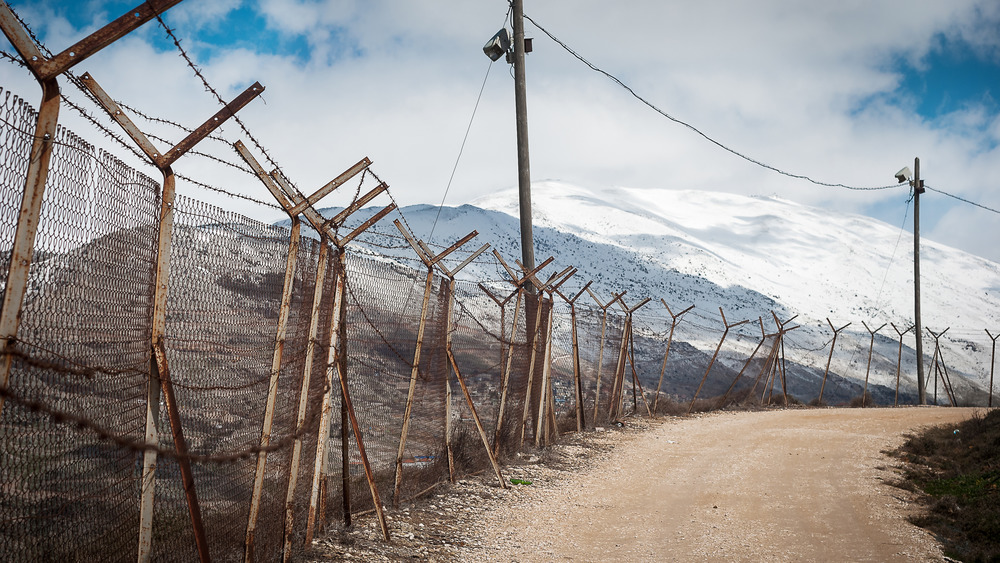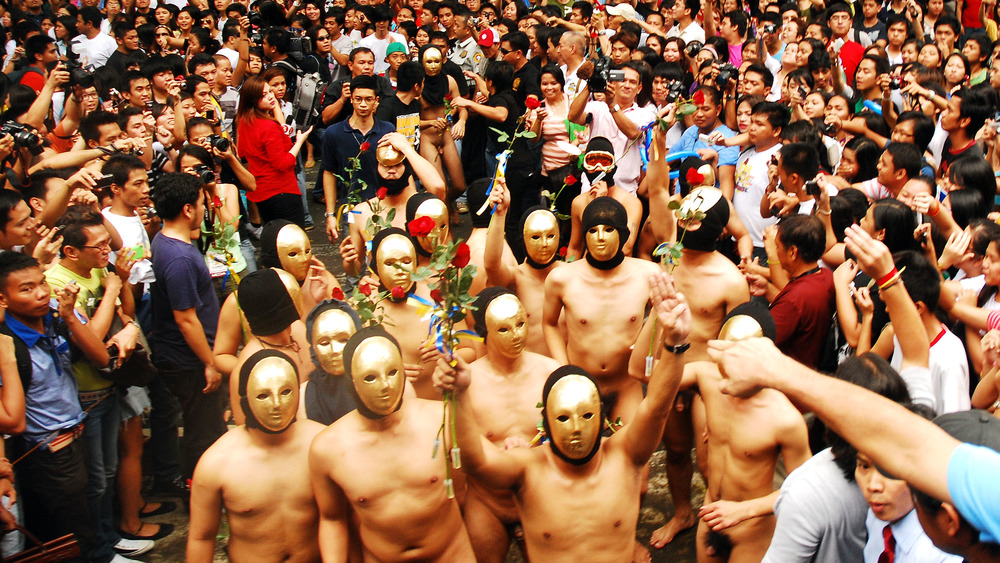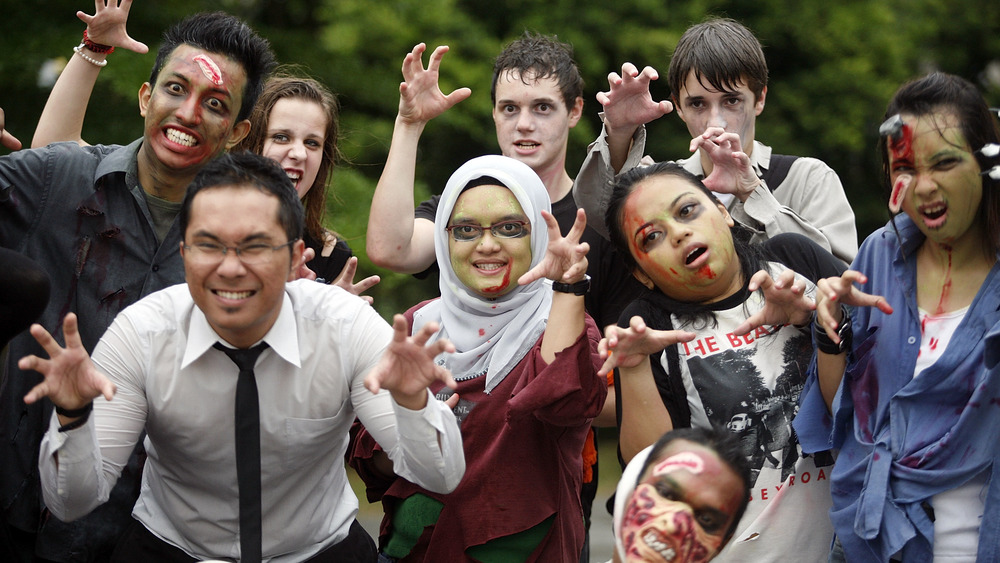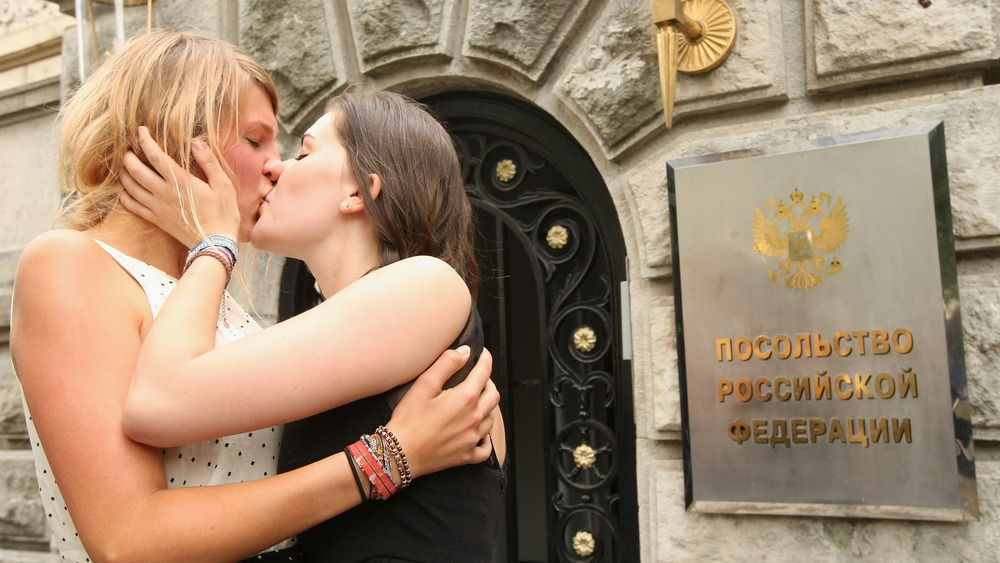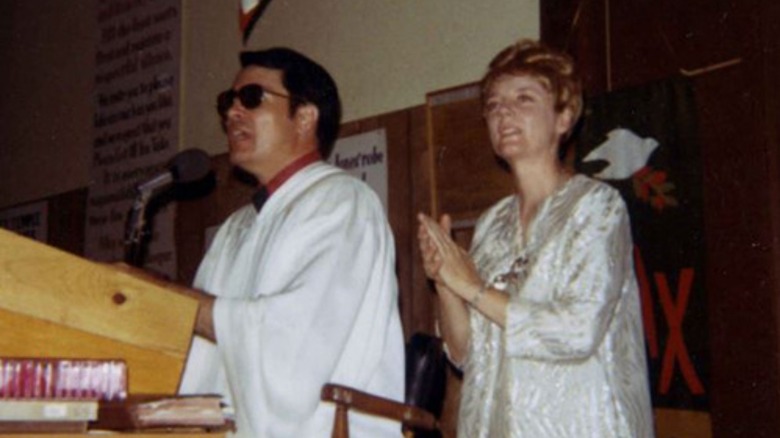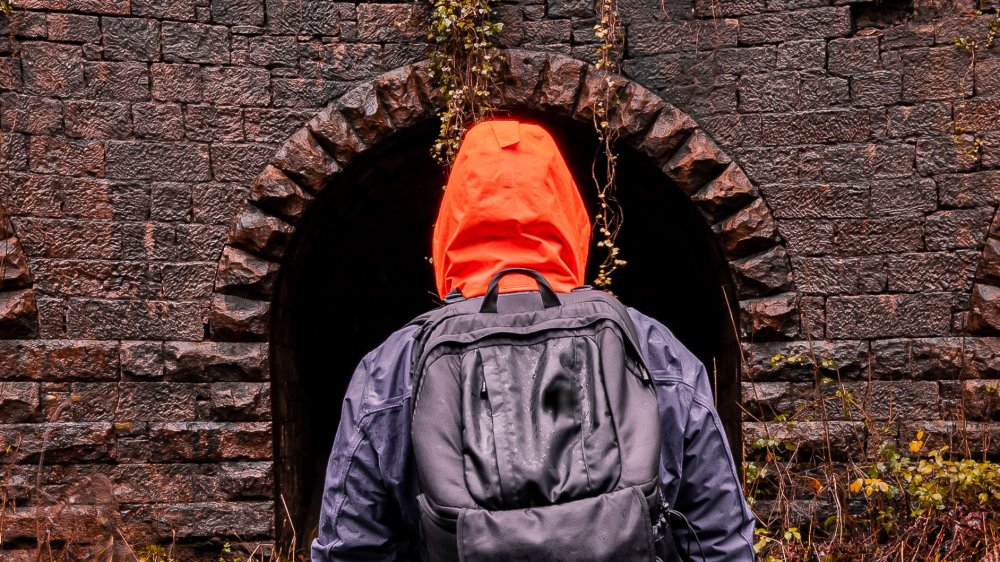
The Weirdest Protest Movements In History
Almost 2,500 years ago, Roman peasants, known as the Plebeians, put the fear of the gods into their social betters by protesting for more rights and better conditions and basically going on strike. One of the most influential global movements of the last 500 years was the Protestant Reformation. Quirky cosplaying tax protests set Britain’s American colonies on the path to independence.
Probably as long as there has been government there has been protesting. Nearly for as many reasons as there have been protesters shouting, demonstrating for change has long been a core human activity. And because humans can be weird and our demands occasionally counter-intuitive, history has been witness to some bizarre demonstrations and demonstrators. Here are some of the weirdest moments in protest history.
Alaska's parking fairies
Back in the 90s, as the Anchorage Daily News explains, “The Anchorage Parking Authority (APA) had a reputation for aggressively ticketing the smallest offenses, and offenses that had nothing to do with parking, such as studded tires out of season and cracked windshields.” One day in July 1994, the APA gave Carolyn “Linny” Pacillo, local gas-station owner, a $75 ticket for having her license plate sticker on the wrong side of the plate, which made her mad. Her sister used to work in downtown Anchorage and already didn’t like the APA, so a scheme was hatched. “It’s not a good idea to make the Pacillo sisters mad,” wrote an Alaska reporter. “They believe in revenge and have an abnormal tolerance for embarrassing themselves in public.”
Just to irritate the APA, the sisters set up a donation jar in their gas station to pay for expired meters downtown. It quickly reached $100, and they donned their new uniforms to begin a four-year campaign of fiscal terror against the APA. With wings, tights, and tutus sparkling, the Pacillo sisters paid the meters for thousands of people and inspired so many spiteful Alaskans that the Anchorage Parking Authority earned over $100,000 less in just one year. They even bought and painted bright pink an old three-wheeled meter maid patrol car, dubbed the Fairy Mobile, an advantage over APA’s foot patrols. After four years, the APA was disbanded and the Anchorage parking fairies retired with a ceremonial burning of their wings.
The Milk Tea Alliance
The 2019 protests in Hong Kong have merged with the 2020 protests in Thailand and meme-warriors from Pakistan to Japan into an international anti-China movement called the Milk Tea Alliance. At its heart, the Milk Tea Alliance is the result of anti-Chinese trolls in Taiwan, Vietnam, Korea, Mongolia, India, and other countries, with a tradition of adding milk to their tea feuding with nationalist trolls from China, who do not drink their tea with milk. The trouble started, as the Diplomat explains, when a Thai actor on a show popular in China angered Chinese trolls on Twitter when he “referred to Hong Kong as a ‘country.'” Yes, Twitter is blocked in China, but it’s a unique place.
As if naming your loose coalition after a shared preference in drinking caffeine wasn’t bizarre enough, the confluence of so many different online cultures and individual protest movements has produced a series of strange images. Because the Hong Kong protests were such a catalyst, umbrellas are a common symbol for the Milk Tea Alliance as is Taiwanese bubble tea and Indian chai. As the Thai King Maha Vajiralongkorn spends a lot of time in Germany, that country’s flag is now a meme and protest symbol by itself. Australia’s ABC reports inflatable rubber ducks and dinosaurs being used to block water cannons along with the Hunger Games three-finger salute has been seen in protests all over Thailand.
Spending two years in a tree
The history of tree-climbing is surprisingly more complicated than nervous moms yelling at 7 year olds. In the early 1930’s, “tree-sitting” became a national craze and headline material as youths competed for longest or weirdest time spent up a tree. “Very young kids across the nation took up the challenge …,” says the Berkeley Daily Planet. “Newspapers and radio stations increased readership … twins sitting, a mother of three, a boy scout and even a housewife with a bathing tub were going for the record.” An Illinois tree was blessed to carry record-holding Leslie “Rhubarb” Davis’ for 107 days. Tree-sitting as a fad ended abruptly when a Kentucky teenager fell to his death.
Beginning around the 1970s, tree-sitting became a somewhat common tactic for environmentalist protesters. But activist Julia Butterfly Hill beat all records and a timber company by living in a California redwood tree for over two years. On Dec. 10, 1997, Hill climbed a giant sequoia that she came to name Luna, and she didn’t come down for 738 days. Living 200 feet in the air is challenging at best, so she had a support crew of volunteers bringing her supplies and taking away waste. The SF Gate reports that Hill and her tree, Luna, got several visitors as well, “including celebrities such as Joan Baez and Woody Harrelson.” Not only was Hill successful in saving Luna, but the company that owns the 1,000-year-old tree even gave her visitation rights.
Palestinian activists paint themselves blue
While some people would describe it as the soporific scion of Dances with Wolves and Ferngully, James Cameron’s 2009 sci-fi epic Avatar was one of the biggest box office blockbusters of all time. A story of blue cat-people being led by a paraplegic magic white man in a fight for their land against colonizing space-marine industrialists earned the over two-and-a half-hour-long film so much money that the list of box office records the movie broke has its own wikipedia page. Perhaps part of Avatar’s success is that anti-colonialism, and riding dragons maybe, is a theme that resonated with audiences. It certainly did among some members of the Palestinian community.
First, just a month after its release, a screening was disrupted when, according to the LA Times, an activist in the theater loudly “announced that the Palestinians should learn from this movie what to do to the Jews causing a commotion and angering others in the audience.” A month later, a bunch of Palestinian protesters mixed up their weekly protest at the Israeli border by dressing as the alien heroes of Avatar. Painted blue, donning ponytail wigs, and wearing loincloths, reported the Guardian, demonstrators marched to the barrier fence to protest before being teargassed.
Annual naked fraternity protests
There is a nude man on every campus of the University of the Philippines. A statue named the Oblation, commissioned by the first Filipino president of the university, symbolizes the university ethos of patriotism and self-sacrifice. The online student newspaper is nicknamed the Oble after it, and according to the Alumni Association, “No symbol is more closely identified with the University of the Philippines than the statue of the Oblation.” It is so much a part of campus life in fact that every year dozens to hundreds of frat boys strip naked in protest.
“Every year,” explains the Oble, “the Alpha Phi Omega Fraternity stages the most-awaited and most-talked about ritual in the University — the Oblation Run.” For a tradition only 40 years old, there is no agreement as to what the first Oblation Run was about. But every year since 1977 the fraternity brothers jointly decide what they’ll strip for that year. Themes for the run have included everything from racism to terrorism to government corruption to campus violence and, of course, tuition increases. Makati City Mayor Jejomar Binay was a member of the fraternity when he attended the university in the 60s and was asked by the Philippine Daily Enquirer if he had ever joined the run. “No. I joined APO in 1960, way before the run started. But I would love to.”
Thriller protest
“The present system is rotten and dead!” screamed student protesters, as well as the banners carried by some in a video that went viral on YouTube in 2011. For months, hundreds of thousands of Chileans, mostly students, had been demonstrating in the streets against what they saw as a broken education system, especially the exorbitant tuition fees. Wired magazine describes how the protests moved through phases and the orders given from protest leaders through Twitter. “After 5 months we mobilized, more of the same and continued repression more brutal than ever. Bang pots today at 20.30 hrs!,” read one tweet. Their antics were loud and brash and designed to wake the dead. Or at least mimic them.
So in mid-2011, some 3,000 protesters gathered before the front steps of the palace of President Sebastian Piñera to continue demanding education reform and increased funding. They were lined up in order, they had loudspeakers, and they looked like death warmed over, with ripped clothing and white faces and bloodmarks. Suddenly music started, and thousands of Chilean zombies danced a pretty well-choreographed routine from Michael Jackson’s “Thriller” music video. Rotting flesh, hundreds of King of Pop clones, cheering crowds, and happy protest-dogs didn’t win over the president, however, and many more years of education protests followed.
Kissing protest
People generally demonstrate to defend or support those things they love, from protecting the environment to ending war. But sometimes, unfortunately, regular people are forced to become activists in defense of love itself. And how better to show your support of love than through physical expression of love, say like a kiss? All over the world, protesters have locked lips as well as arms to bring awareness to discrimination, violence, and injustice against people for no crime other than showing their love for someone.
In 2018, LGBT activists in Manhattan staged an affectionate protest outside the Uzbekistan consulate to bring attention to the harsh and repressive laws prevalent all throughout central Asia. “Kiss-ins have been used as a tactic during queer protests around the world for decades,” said Vinny Amendolare of LGBT advocacy group Voices4 (via Vice). “Our kiss-in could have gotten us imprisoned for years in other countries — not to mention extorted, tortured, and killed.”
While in India, social conservatism of a different sort makes the act of kissing in public at all a lewd and immoral act. So much that when an Indian broadcaster showed an image of a couple kissing on television, riots broke out within an hour. Twenty-four hours later however, the Kiss of Love campaign was in full swing, and pro-kissing protests were held in multiple cities. USA Today reported that similar kissing protests have been held in other countries, like Morocco and Turkey.
The Panda Protest
The city of Berkeley, in no small part due to its University, is one of America’s weirdest and most dissident-friendly cities. As far back as the 1940s, Berkeley was hosting peace demonstrations, women’s rights marches, and civil rights protests. As The Daily Californian puts it, “It’s Berkeley, people protest protests (true story).”
Which is exactly what happened in 2009 when the chain restaurant Panda Express planned a new location on the University of California, Berkeley campus. Some members of the famously liberal student body was concerned that the corporate eatery wouldn’t jibe with the university culture of healthy-eating, environmental awareness, and support for local and minority-owned businesses. “This will severely damage UC Berkeley’s reputation as a leader in sustainability,” student Yonatan Landau told the SF Gate.
Landau was part of a group that preferred a student-run food co-op to the Panda Express, and in true Berkeley fashion they made their feelings known. Landau put $90 down for a panda suit, shoved a freshman inside, and went off to form a picket with around 20 other Berkeley students. The panda carried two big bags of fake cash, while the student protesters chanted around him, “Panda Express doesn’t pass the test.”
Panda Express executives were kind of confused. They already had locations at 36 universities around the country, including four in the University of California. But, as Panda Express said after shelling out $750,000 in upgrades, “let’s put it this way: We understand Berkeley is a very unique culture.”
The Clandestine Insurgent Rebel Clown Army
President George W. Bush visited London in 2003, and among the many thousands of protesters screaming at him in the streets were a small band of artist-activists in full clown regalia. Red noses, floppy shoes, grease paint, and ugly wigs were the decidedly non-uniform uniforms of what would become known as the Clandestine Insurgent Rebel Clown Army (CIRCA). “It’s a core CIRCA premise,” says group co-founder John Jordan, “that mocking and utterly confusing the enemy can be more powerful than direct confrontation.” In an essay in the European Journal of Humour Research, another co-founder, “General Confusion,” describes it as “a form of political activism that brings together the ancient art of clowning and more recent practices of non-violent direct action.”
“Rebel clowning” developed a methodology, training manuals, and a serious following. They started by working with professional clowns, explained Jordan. “CIRCA’s combatants are not meant to pretend to be clowns, they should be real clowns.” Far from the tiny British street performance protest group demonstrating against the Iraq War, the CIRCA is now everywhere. The group’s antics attracted wide attention, and self-organized groups have spontaneously sprung up, says Jordan, “taking action in the streets outside summits and military bases in dozens of countries from Colombia to New Zealand.”
Getting naked for…anything
Protesting is all about getting attention — if they don’t see or hear you, they cannot listen to you. Carrying banners, shouting slogans, and stopping traffic are all designed to make other people stop and watch. And few things can match the eyeball-stopping power of exposed human jiggly bits, which is why naked demonstrators can be found in protests all over the world and for a lot longer than you may think.
FEMEN is an “international women’s movement of brave topless female activists” who’ve protested all throughout eastern Europe and even North Africa. As a matter of fact, Africa has a very long history of nude protesting, especially by women — from anti-colonialist marchers during the Nigerian “Women’s War” of 1929 to Ugandan activists protesting sexual assault in 2001. Female nudity can be such a powerful tool in fact that, as the CS Monitor reported, ChevronTexaco was cowed into negotiations with local villagers.
All over the world, for all kinds of causes, people bare all — to get attention, like PETA activists and their allies; to raise money, like a small town of quaint Canadians going the full monty fundraising to fix potholes; to raise money and awareness for a subject, like the World Naked Bike Ride; to tell politicians how you feel about them, like the Londoners who planned to moon Trump; and to protest taxes, like the legendary Lady Godiva.
Underwater protests for an underwater president
Climate change is a serious issue for the Republic of Maldives. The nation is comprised of many hundreds of small islands that stand less than an average of 5 feet above sea level. When scientists warn of rising sea levels, people in the Maldives listen. So much so that in 2009 then-president Mohamed Nasheed convened his cabinet to protest climate change … underwater. “Clad in black diving suits and masks, Nasheed, 11 ministers, the vice president, and cabinet secretary … used a white plastic slate and waterproof pencils to sign an ‘SOS’ message,” Reuters reported at the time.
Unfortunately for Nasheed, he was ousted in what many observers referred to as a coup d’etat and later sentenced to 13 years in prison in what Amnesty International described as a politically motivated trial, per the Guardian. Nasheed was actually a pretty popular president, and when he called on his fellow citizens to “to confront the dictatorial power of this regime” and take to the streets, many listened. Some went a bit further. In a fitting homage to their imprisoned former leader, 100 scuba divers held an underwater protest. According to the Associated Press, they swam 16 feet underwater, carrying signs saying “Free Nasheed Now,” “Free the Climate Hero,” and “Democracy in Jail.” Nasheed eventually was released. In fact, he returned to politics and in 2019 became speaker of parliament.
Dead rats and snakes in your mouth
Farmers in India’s southernmost state of Tamil Nadu were not living large in 2017. The loans they depended on to keep their livelihoods intact were becoming burdensome, and now their crops were decimated by drought. More than crippling debt, they were beginning to starve. They began to organize and agitate for federal farmer’s debt relief. After two weeks of protests accomplished nothing, the protesters began to bring props. Forget banners — to symbolize their struggles these farmers used physical, creepy, weird, very-much-not-everyday objects.
They tied nooses around their necks for the farmer’s who had killed themselves and tied black gags across their mouths to highlight the government’s silence. On day 16 of the protest, India Today reported, it got real heavy when protesting farmers brought actual human skulls to “represent the farmers who committed suicide in Tamil Nadu. They said that the farmers gave their lives as they were unable to cope with drought and surmounting loans.” Then the protesters began carrying snakes and rats… in their mouths. As Premkumar, one of the protesters, told the Quint, “With the crops destroyed, only rats and snakes are left in our fields. Each of us held a piece of a snake in our mouth to show that this was all we can afford to eat now.”
If you or anyone you know is having suicidal thoughts, please call the National Suicide Prevention Lifeline at 1-800-273-TALK (8255).

If These Structures Ever Broke, The US Would Be In Serious Trouble

This Theory Connects Atlantis And The Bermuda Triangle

Fourth Of July Celebrations That Went Terribly Wrong

Your Body Could Turn Into Soap After You Die. Here's How

Chilling Ways The Sinking Of The Titanic Was Foreshadowed

The Crazy History Of Necromancy Explained

The Legend Of The Headless Horseman Explained

Is Walt Disney's Body Really Frozen?
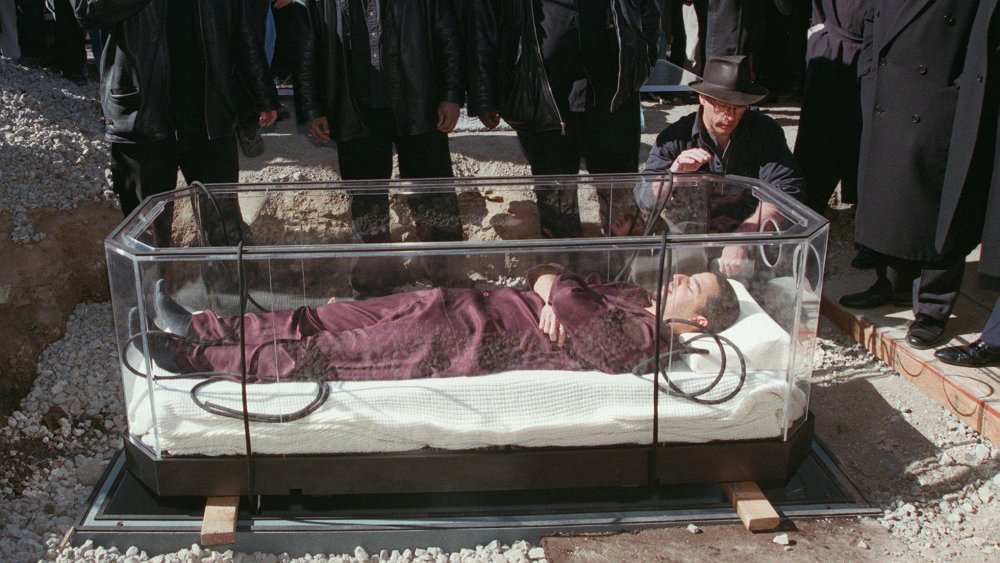
How Long Can You Live If You Get Buried Alive?

Biggest Cat Fails Caught On Camera



